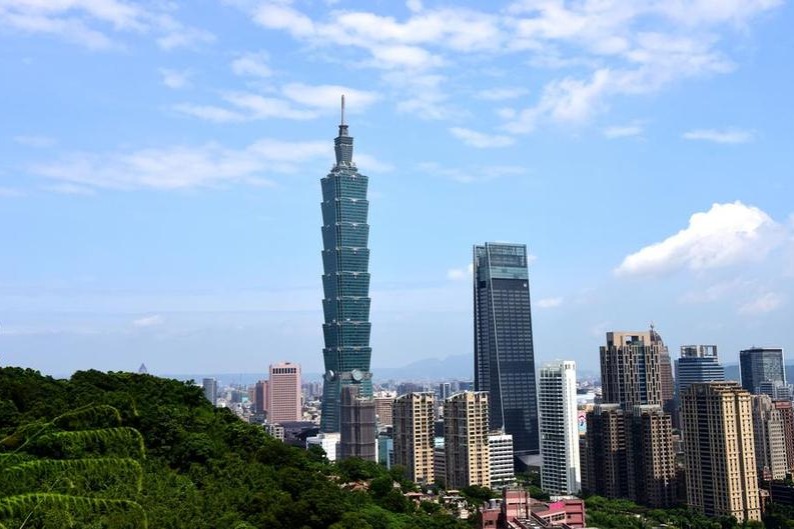Arctic Ocean amplified global warming 56m years ago, research says

Research led by Chinese scientists has recently revealed that subtle changes in ocean sulfate concentration can alter the way methane is consumed, acting like a "chemical switch" that regulates global climate, explaining how the Arctic Ocean amplified global warming 56 million years ago.
The team led by Zhang Yige, a researcher with the Guangzhou Institute of Geochemistry, Chinese Academy of Sciences, together with its international collaborative team, published the findings in international academic journal Nature Geoscience on Sept 23.
According to the study, during the extreme heat event, or Paleocene-E-ocene Thermal Maximum (PETM), 56 million years ago, the concentration of seawater sulfate was the key "chemical switch", controlling the methane oxidation pathway.
Earth experienced extreme global warming and ocean acidification during the PETM event.
PETM has long attracted scientific attention due to its many similarities to current climate change. However, the carbon cycle mechanism behind it remains an unsolved mystery.
"Due to a severe shortage of sulfate, just like a lack of fuel, the 'power plant' cannot function properly, and methane can only enter the seawater," said Zhang in Guangzhou, the Guangdong provincial capital.
"At this point, another type of oxygen-loving bacteria begins to 'rapidly oxidize' methane — they directly consume oxygen and release CO2 quickly, similar to how high-temperature combustion releases large amounts of exhaust gas," Zhang said.
In the modern ocean, approximately 90 percent of methane is utilized by microorganisms in sediments under anaerobic conditions.
The process is like a "slow-burning power plant" — using sulfate as "fuel" to efficiently convert methane into energy while producing alkaline substances that mitigate ocean acidification, he said.
However, the sulfate concentration in Arctic seawater during the PETM was less than one-third of that in the modern ocean.
The research team successfully "reconstructed" the methane oxidation process 56 million years ago by detecting a special molecular tracer — the compound hop-17(21)-ene and its carbon isotope composition.
The molecular tracers are like "identity cards" left by ancient bacteria, indicating that during the late stage of the PETM event, the activity of methane-decomposing bacteria that carry out "rapid combustion" increased significantly to a peak, according to the study.
Kim Bum-soo, the first author of the paper from South Korea, said, "By reading these 'identity cards', we can accurately determine which type of microorganisms were active at that time, whether they were 'slow-burning power generators' or 'fast burners', and how intense their activity was."
CO2 concentrations reconstructed from molecular tracers of marine phytoplankton show that during the recovery phase of PETM, CO2 levels in the Arctic Ocean were 200-700 ppm higher than the global average, indicating the Arctic Ocean transformed from a "sponge" that originally absorbed carbon dioxide into a "chimney" that emitted it.
"Due to the freshening of seawater and the reduction of sulfate, methane could only be decomposed through the 'fast-burning' method, directly producing large amounts of CO2," said researcher Shen Jiaheng, a co-author of the study.
"This fundamentally changed the Arctic's role in the global carbon cycle, turning it into a source of greenhouse gas emissions," she said.
Zhang Yige said the study further reveals geological activities, including crustal movement, rock formation, continental weathering and volcanic eruptions, directly affect the sulfate content in the ocean, which in turn determines the way methane is decomposed.
In the ancient oceans from the Mesozoic Era (the age of dinosaurs) hundreds of millions of years ago to the early Cenozoic Era tens of millions of years ago, the sulfate content remained low for a long time — a characteristic that may have had a significant impact on the global carbon cycle and climate.
"This is like Earth's system processes controlling the ocean's 'fuel supply system', which in turn affects the way methane energy is utilized and the entire climate system," Zhang emphasized.
As the modern Arctic Ocean warms and freshens rapidly, similar methane oxidation mechanisms may be reactivated.
The study reminds that when Arctic seawater becomes less salty and its chemical environment changes, the scenario from 56 million years ago may repeat itself — methane shifting from efficient utilization to rapid release — and changes in this region require close attention.
zhengcaixiong@chinadaily.com.cn
- Arctic Ocean amplified global warming 56m years ago, research says
- Duo helps give Maasai girls a fine childhood
- Soy sauce brews new innovations
- Young inventors redefine innovation with purpose and heart
- Clinic offers fresh path to neurological rehabilitation
- CAU called on to train more professionals




































